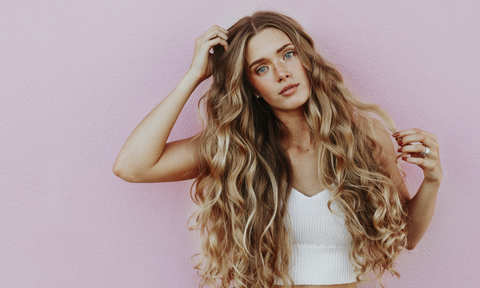What is the deal with this fuss about choosing natural products? Does it really make that much of a difference what I expose my body to?
Yes. It does. And in this post, I seek to answer why.
Women and men have always desired gorgeous hair as it is the ultimate signature of beauty. It is common to use our hair colour as an indicator of our personal style, or as a tool to cover emerging grey hair. Hair colour thus is a highly attractive beauty product. But as much as we love our colourful hair, it is a fact that permanent hair dyes contain a mixture of chemicals that may damage your hair and your health. The trick is to choose the most natural hair dye with the least toxins.
NATURAL HAIR DYE CONTAINS LESS TOXIC CHEMICALS
In the following are listed six of the most common chemicals, which you should all watch out for when choosing your natural hair dye.
PPD (P-PHENYLENEDIAMINE)
PPD is an ingredient derived from ammonia and is often found in hair colours. The most commonly known risk of PPD is allergy. Many people are to some extent allergic to this substance. And even if you’re not allergic, the effect of PPD is believed to be cumulative.
This means that the more you are exposed to the substance, the more likely you are to develop a reaction in time. Allergies should be taken serious, so if you still want to use products with PPD in them, you should do a patch test beforehand to make sure you don’t get an allergic reaction.
AMMONIA
Ammonia is a colourless gass that works as a precursor to for example foods and as a building block for various pharmaceutical products, such as hair colours. In hair dyes, ammonia is used to prepare the hair shaft to take in the pigment by opening the hair shaft and cuticle.
This process damages the hair because the pH of the hair is raised to a level where it is basically impossible to return to a normal level after colouring. Thus, the hair loses protein and moisture. Furthermore, ammonia is irritant to the skin, eyes and respiratory system, and can cause asthma and breathing difficulties.
PARABENS
Parabens are the most commonly used preservative in personal care products. The basic function of parabens is that they stop bacteria and fungus from moving into your favourite beauty products.
Parabens have been victim to much vilification because 1) they can mimic estrogen, and 2) they can be absorbed into our skin and potentially affect our endocrine system. Nothing has been scientifically proven, but researchers well know that estrogen exposure can be linked to breast cancer progression. And therefore, more research is needed on this subject. However, we do know that parabens can be absorbed and detected in blood and urine. This means they could potentially affect and harm our health.
PERSULFATES
Sodium, potassium and ammonium sulfates are present in hair dyes and bleaches, and are used in concentrations of up to 60 %. BUT concentrations of only 17.5 % have been shown to irritate skin, so when in contact with this chemical, make sure your wash and rinse your skin well after. Persulfates are also toxic when the fumes are inhaled, causing asthma and lung damage.
SLS (SODIUM LAUREL SULFATE)
This chemical is widely used in many hygiene products such as shampoos. The basic function of SLS is that it allows for better interaction between the product and your hair. This is done by breaking surface tensions and separating molecules.
But how does SLS really affect your body? There are conflicting answers to this question. One thing about SLS that is heavily debated is whether it is a carcinogen. That is, a potential cause of cancer. However, there are currently no scientific evidence that this is the case. But SLS poses other threats to the health of your hair and skin. For example, it can cause irritation to the skin and scalp, even when the level is very low.
NATURAL HAIR DYE CONTAINS MORE NATURAL BENEFITS
The primary reason for choosing a natural hair dye is to avoid the chemicals. However, natural hair products possess other beneficial qualities for your hair and body as well. NATURIGIN’s natural hair dye formula is based on natural ingredients, which all contain certain natural benefits for you and your hair.
Fruits, plants and vegetables all possess natural benefits that you can transfer to your hair. Learn more about the benefits of natural and organic ingredients.
Now, just because a natural hair dye contains natural ingredients, it does not mean that there are zero harm in using it.
However, the more natural ingredients and the less chemicals, the better the product is for your body. AND! Our experience is that the result you get from a natural hair dye can be just as good – if not better – as from a chemical-stuffed hair dye. I hope you think about these facts the next time you wish to dye your hair.





